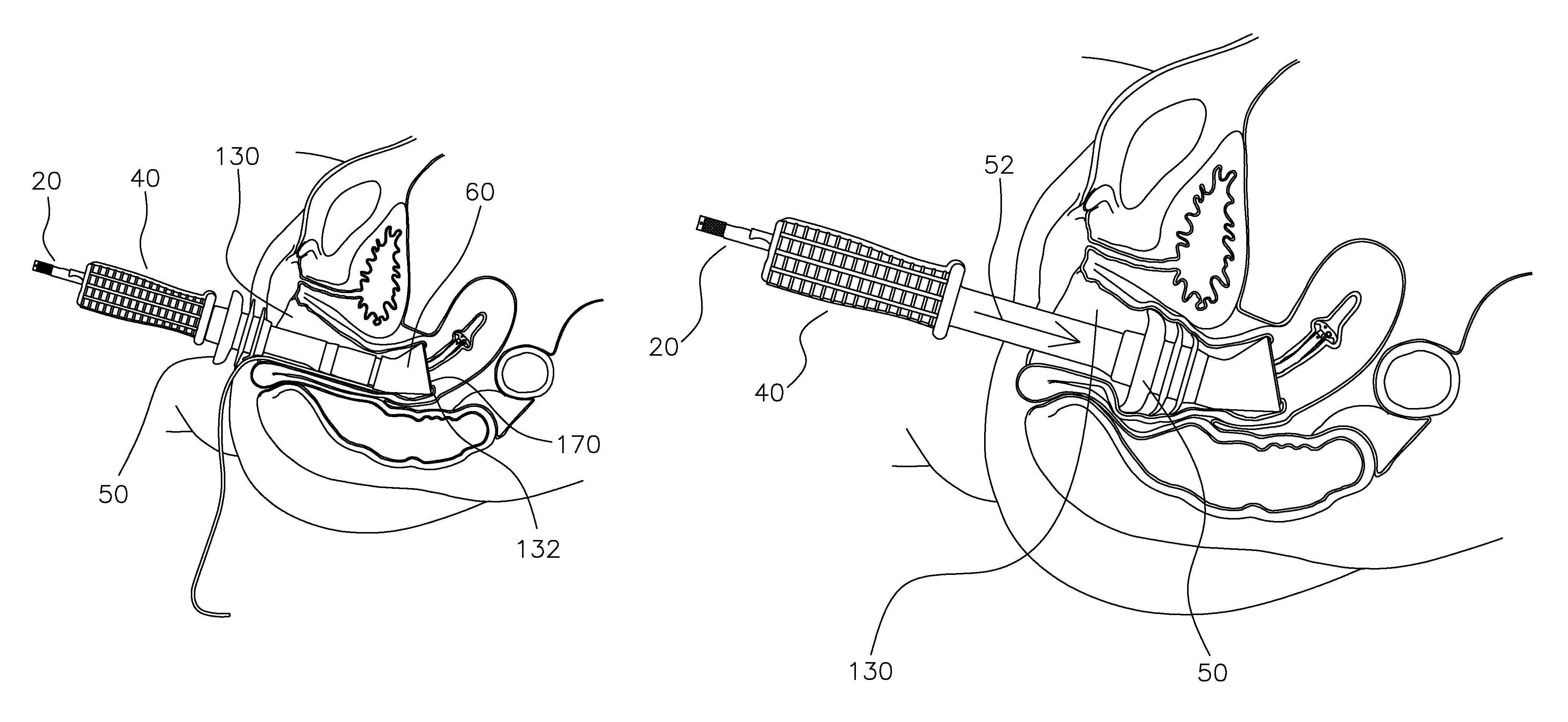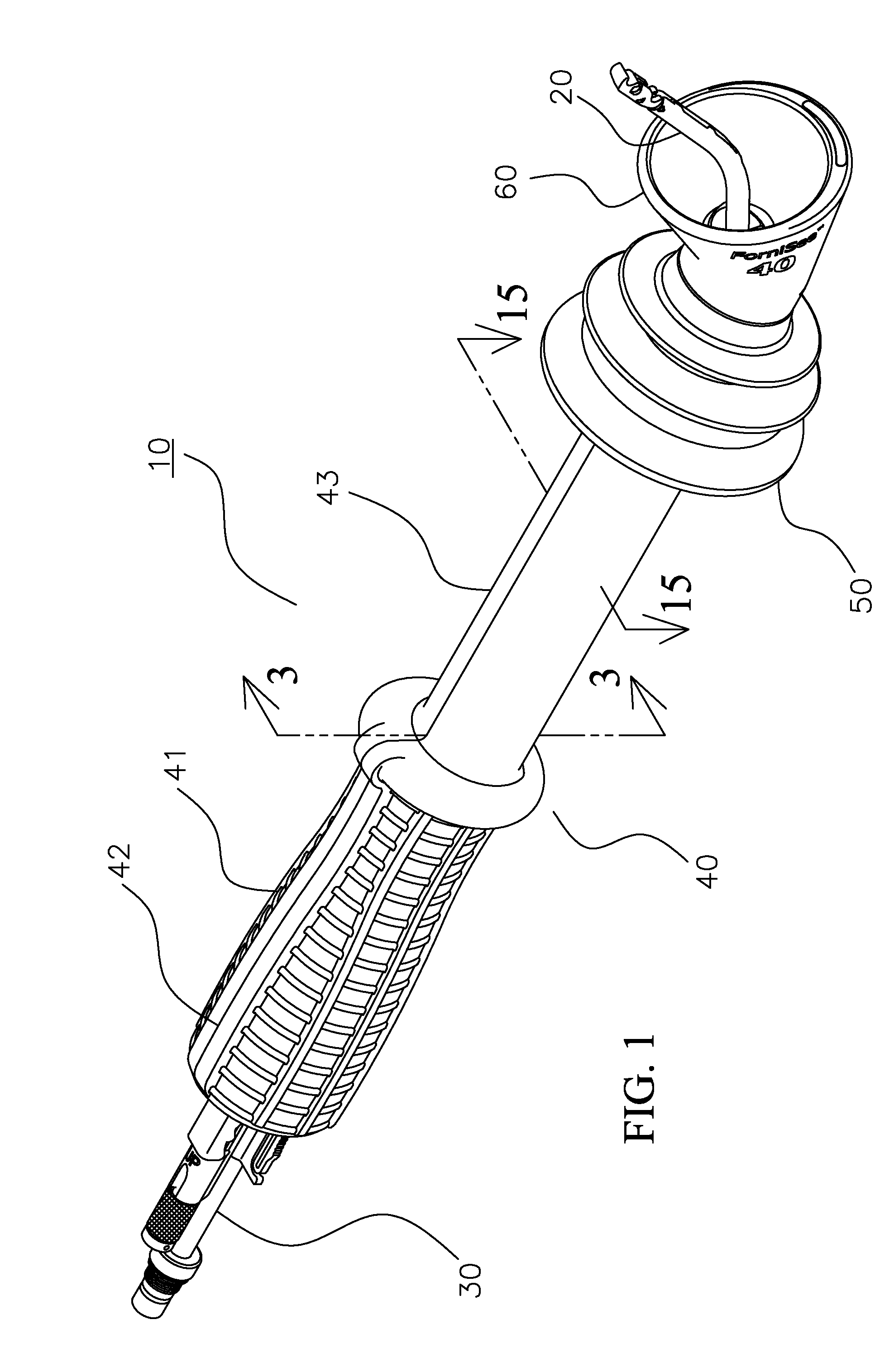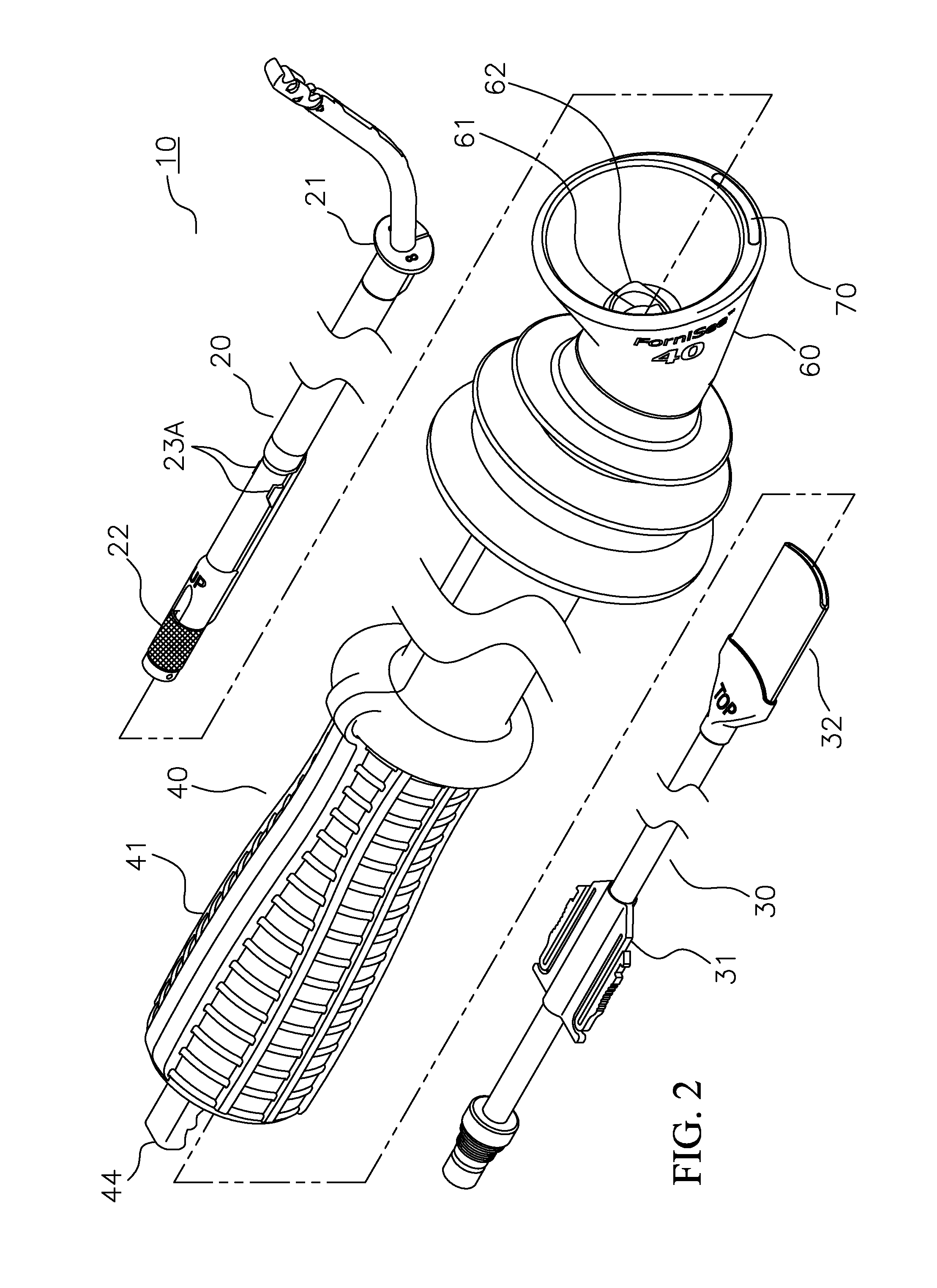Ergonomic, lighted uterine manipulator with cautery
a lighted, ergonomic technology, applied in the field of ergonomic uterine manipulators, can solve the problems of increasing the time of uterine dissection, affecting the efficiency of uterine dissection, and the difficulty of identifying the cervical cup edges and the targeted fornices, and facilitating the benefits and convenience. , the effect of enhancing uterine manipulation
- Summary
- Abstract
- Description
- Claims
- Application Information
AI Technical Summary
Benefits of technology
Problems solved by technology
Method used
Image
Examples
Embodiment Construction
[0050]While the invention has been described in connection with certain presently preferred embodiments thereof, those skilled in the art will recognize that many modifications and changes may be made without departing from the broad scope of the invention, which is intended to be defined solely by the appended claims.
[0051]Referring to FIG. 1, a perspective view of a uterine manipulator 10 is shown, comprised of a sound 20 and a light wand 30 accepted within and housed by a device 40. The sound 20 and light wand 30 are generally manufactured such that they are reusable and preferably comprised of rigid, sterilizable, and cleanable materials such as stainless steels and the like. The device 40 is typically disposable and generally comprised of sterilizable molded polymers.
[0052]Evident in the device 40 are a proximally located textured handle 41 imparting a tactile surface for ease of physical manipulation of manipulator 10 and device 40, an indicator ridge 42 to delineate manipulat...
PUM
 Login to View More
Login to View More Abstract
Description
Claims
Application Information
 Login to View More
Login to View More - R&D
- Intellectual Property
- Life Sciences
- Materials
- Tech Scout
- Unparalleled Data Quality
- Higher Quality Content
- 60% Fewer Hallucinations
Browse by: Latest US Patents, China's latest patents, Technical Efficacy Thesaurus, Application Domain, Technology Topic, Popular Technical Reports.
© 2025 PatSnap. All rights reserved.Legal|Privacy policy|Modern Slavery Act Transparency Statement|Sitemap|About US| Contact US: help@patsnap.com



